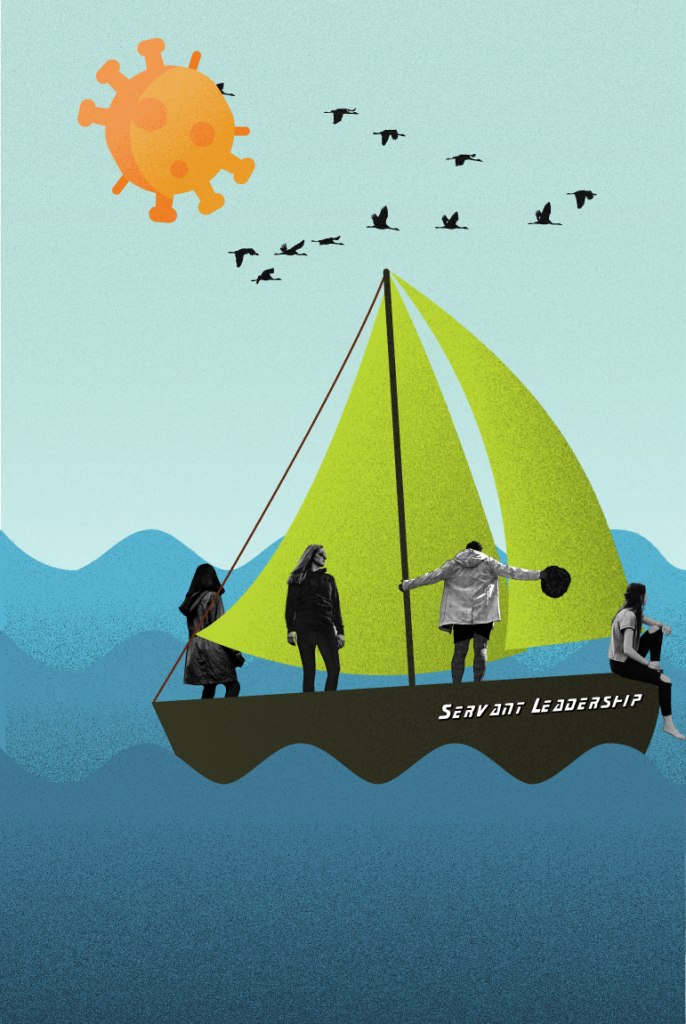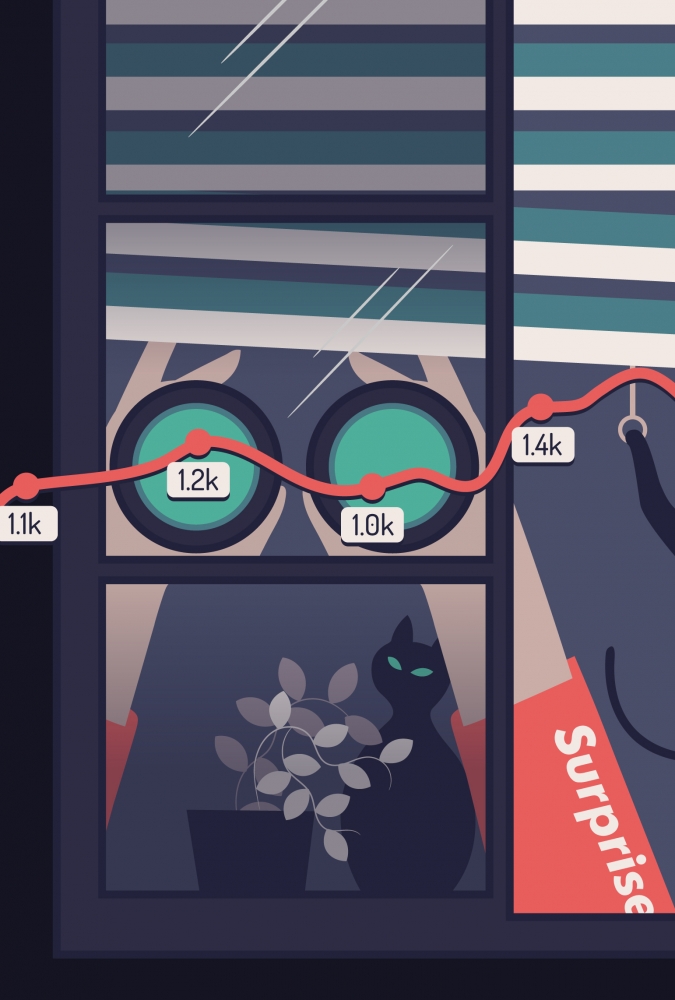
The past couple of months have been quite different from anything we have experienced, both in our personal lives and during our careers.
This is true for people from all backgrounds. No matter the country one lives, their socio-economic backgrounds or occupations one has held; we are all facing the impact of COVID-19.
While local governments are figuring out ways to fight the economic effects of this global pandemic, we are adjusting and navigating through our new reality. Our new reality is one where “the old way” stopped working. Shopping, socializing with friends, schooling, going to work, you name it.
So when it comes to our workplace, are we adapting enough? Are the methods and ways we are leading our company and our teams working? What if introducing remote work, flexible schedules, and great collaboration tools are not enough to guarantee employee happiness or project deliveries?
I believe there is an often missed but essential ingredient in the equation: practiced empathy.
THE MISSING INGREDIENT
Empathy. To fully understand this relatively new concept in humankind’s legacy, let’s travel back in time to Europe to the early 18th and 19th centuries.
The Golden Age of modern philosophy that changed “a concept of nineteenth-century German aesthetics into a central category of the philosophy of the social and human sciences’.” It was Theodor Lipps’s understanding of the term Einfühlung (from ein “in” + Fühlung “feeling”) that influenced Edward Titchener to introduce the term “empathy” in 1909 into the English language1:
Not only do I see gravity and modesty and pride and courtesy and stateliness, but I feel or act them in the mind’s muscles. This is, I suppose, a simple case of empathy, if we may coin that term as a rendering of Einfühlung; there is nothing curious or idiosyncratic about it; but it is a fact that must be mentioned2.
Fast forward to the 21st century. Gallup Inc, a global analytics and consulting firm, puts empathy on their list of 34 Clifton Strengths talents. Talents defined as “(…) natural patterns of thinking, feeling and behaving”3. The methodology behind recognizing one’s talents, and empathy, in particular, is quite complex, but you can get a general idea of your level of empathy by checking the degree to which the following statements are true for you:
- “You can sense the emotions of those around you. You can feel what they are feeling as though their feelings are your own. Intuitively, you are able to see the world through their eyes and share their perspective”
- “You do not necessarily agree with each person’s perspective. You do not necessarily feel pity for each person’s predicament — this would be sympathy, not empathy”
- “You do not necessarily condone the choices each person makes, but you do understand. This instinctive ability to understand is powerful”
- “You hear the unvoiced questions. You anticipate the need. Where others grapple for words, you seem to find the right words and the right tone. You help people find the right phrases to express their feelings — to themselves as well as to others. You help them give voice to their emotional life. For all these reasons other people are drawn to you”4
While skills can come naturally, It’s important to mention that your Clifton Strengths score, your current ability to empathize, is not a final answer – anyone can improve their ability to empathize by following simple guidelines.
AGILE AND SERVANT LEADERSHIP
People familiar with software development often have opportunities to work in Agile methodology. Agile Alliance, a non-profit organization focused on evangelizing this particular way of delivering projects, defines Agile as:
“the ability to create and respond to change. It is a way of dealing with, and ultimately succeeding in, an uncertain and turbulent environment”5.
Fundamentally being Agile is about adaptability and responsiveness to events that arise and to the world that surrounds us.
In software development, it can be a client’s expectations, budgets, development teams resources, or users’ desires. It’s no surprise that empathy comes in handy when you need to understand different perspectives and communicate your needs in a respectful manner.
Agile frameworks that are empathy-led design great products for the end-users.
One specific framework is Design Thinking, which uses a tool called “Empathy Mapping”. Empathy Mapping puts a user persona at the center of attention and gives insight by asking simple questions around what that person thinks, says, feels, and does.
If empathy already exists in our official toolbox for delivering great projects, why not use it to improve employee experiences?
Frameworks like the one included here are quite easy to adapt for people management purposes, but it requires you to start thinking of employees as users of your organization. This shift in leaderships’ perspective encourages organizations to seek more efficient ways of working with their teams. One of the most popular philosophies when searching for answers on how to be a better leader is servant leadership. Albeit indirectly, it implies the importance of empathy in everyday life. The thesis, developed by Robert Greenleaf in 1970, states:
“(…) If a better society is to be built, one that is more just and more loving, one that provides greater creative opportunity for its people, then the most open course is to raise both the capacity to serve and the very performance as servant of existing major institutions by new regenerative forces operating within them.”7
For a leader, it means being the servant-first,
“(…) share power, put the needs of others first and help people develop and perform as highly as possible”.8
The benefits of an empathetic approach differ depending on the organization, it’s culture, and even geographic location. Here are some possible outcomes that more empathetic leaders might experience:
- Stronger relationships with team members, based on mutual trust and respect. With stronger relationships, you will increase the chances of employees approaching you with their concerns and needs. Great relationships hold teams together and make them stronger.
- People will feel heard and appreciated. That builds engagement. According to Gallup’s research, only 15% of the world’s workers are engaged at work. At the same time, “people with great jobs (…) have far better health and wellbeing, and have fewer workplace accidents and little to no mistakes and defects”.9 The same research shows that “70% of the variance in team engagement is determined solely by the manager”.10
- Healthier employees. Recognizing other people’s feelings reduces the chances of their clinical burnout and experiencing psychological problems such as insomnia, anxiety, alienation, fear, and depression. Mental Health is vital to an employee’s performance.
- Increased team productivity. You can better understand what drives your employees’ actions and what motivates them. When you apply that knowledge, the team’s productivity will increase. Per Gallup’s research, “teams that are highly socially connected to the rest of the organization are also (…) higher-performing”.11
GUIDELINES (BECOMING AN ANTHROPOLOGIST)
I mentioned there are some simple guidelines that anyone can follow to become more aware of other’s emotions, but I think it’s important to acknowledge that it is not a one size fits all.
There are many ways of making people feel cared for, ways that allow yourself to grow into the leader you aim to become. You may already have your own unique strengths as a leader to keep people motivated. These strengths are important, authentic, and crucial to continue using. Nevertheless, expanding your repertoire is healthy practice; growth and improvement doesn’t need to stop at the employee level.
Here are some quick tips to improve your empathy skills:
- If you witness an action or behavior you don’t understand, try thinking about that person’s motivations. Maybe they know something you don’t? Maybe it’s a cultural difference? Improper communication path? Fear of change? This is a great exercise for understanding different perspectives and reasons behind people’s actions.
- Work on your listening skills. Be aware of your own emotional reactions and how they might be a distraction. Learn how to shut off your inner voice that makes you want to comment on things you hear. Don’t rush to judgment. Let people follow their natural style of narration, don’t interrupt their flow, and ask short questions whenever there’s a room for digging deeper into raised issues – be curious.
- Inspire people by caring about them rather than bossing them around. Be a gentle and understanding teacher. Establish yourself as a leader because of who you are and how you support your team. Make people feel safe and comfortable, so they are not afraid to come to you with questions or concerns.
- Help people articulate their emotions so they can better understand them. Acknowledge, investigate and accept people’s emotions, even if you don’t feel the same way.
For those who don’t feel comfortable with the idea of using empathy as a primary management tool, I’d suggest getting inspiration from anthropology.
From a very broad perspective, the anthropology field is the study of human beings and their behaviors. Within the field, there is a number of co-existing subfields, (archeology, linguistic, biological, cultural anthropology), but the common goal for all anthropologists is to understand the big picture and gain the insiders’ point of view.
The role of a manager is the same, it requires curiosity, dedication, good observation skills, and the ability to ask questions.
The analogy seems to be acknowledged by modern concepts of business and organizational anthropology that apply the anthropological perspective, its constructs, theory, and methods to study organizations and understand them better.13
You could simply start by asking one of the most useful questions: “why?”. It’s greatly represented by Toyota’s 5 Whys method, a part of Lean philosophy.
“The basis of Toyota’s scientific approach is to ask why five times whenever we find a problem (…) By repeating why five times, the nature of the problem as well as its solution becomes clear.“ – Taiichi Ohno14
Is becoming a more aware leader, mindful of people’s reasonings, feelings, behavior patterns worth the effort? To truly adapt and lead in ambiguous times, we need to do our homework and start changing “the old way”. Even in uncertain times, organizations can thrive, and nurturing strong relationships could help you in achieving that goal. Gaining the anthropological perspective allows you to see your customers, clients, or business partners through an unbiased lens. It will “bring every voice to the table by including the low-level employee and the isolated consumer, promote intercultural knowledge by understanding the value in diverse groups, and bring underrepresented groups into the discussion.” 15
The final “why?”, for whether it’s all worth it, is: because we all need it. We need more dialogue, empathy, inclusion, a sense of belonging, and an opportunity to be listened to. If 2020 teaches us something, is that the power of relationships cannot be overestimated.
Illustration by Mariana Meirelles.




